Invisalign – Jersey City, NJ
A Clear Path to Straight Teeth

Even if you hate your crooked smile, you may think fixing it would be an ordeal. You’d surely have to endure a lot of invasive and complex orthodontic work for that process. However, aligning your grin doesn’t actually need to be a hassle; you can just get Invisalign in Jersey City. This treatment will straighten out your teeth smoothly and quickly, all with little to no hassle. Just keep reading or book a consultation to learn more!
Why Choose AV Dental Associates of Jersey City for Invisalign?
- Smooth & Precise Digital Impression System
- A Highly Experienced Dental Team
- Flexible Financing Through CareCredit
How Invisalign Works
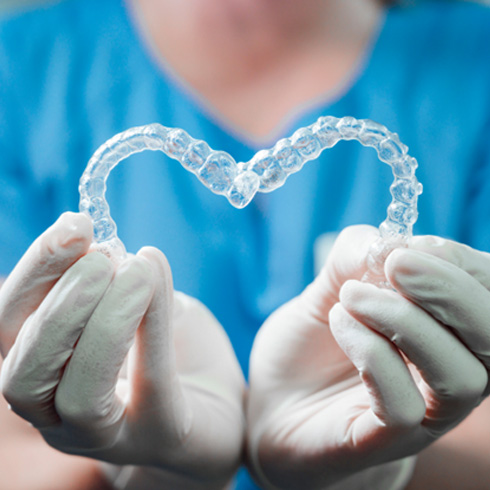
Rather than metal brackets and wires, Invisalign straightens smiles with clear, plastic trays. These “aligners” apply pressure to a patient’s teeth to move them to the correct positions. As such, wearing them long enough will give you an aligned and balanced grin.
The Invisalign process involves specific guidelines as well. Firstly, it requires that you wear your aligners for 7-14 days before moving to the next ones. Your trays must also stay on your teeth for 22 hours daily; less time than that can cause treatment delays. If you stick to these (and similar) rules, you'll sport a straight smile in 12-18 months at most.
Who Can Invisalign Help?
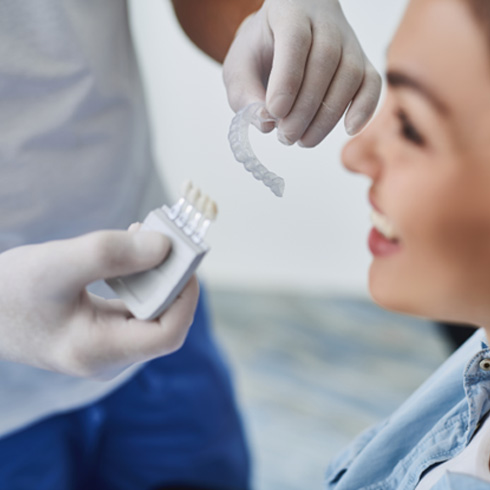
Invisalign is a great choice for many patients who have mild to moderate dental misalignment and who want a discreet, convenient means of straightening their teeth. During your consultation, our Jersey City team will evaluate the positioning of your teeth and other relevant factors before we make a treatment recommendation. Here are a few specific examples of the orthodontic issues that we commonly use Invisalign to correct:
Crowded Teeth
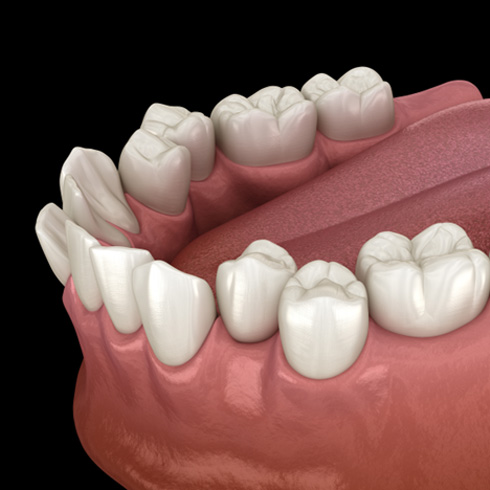
Your smile’s health and looks will suffer if your teeth are crowded. Food may get trapped between them, increasing your risk of cavities, gum disease, and bad breath. Can Invisalign fix crowded teeth? In many cases, yes! These custom clear aligners can handily address this issue by aligning your teeth so each one has the space it needs to function well and be easy to clean.
Gaps Between Teeth
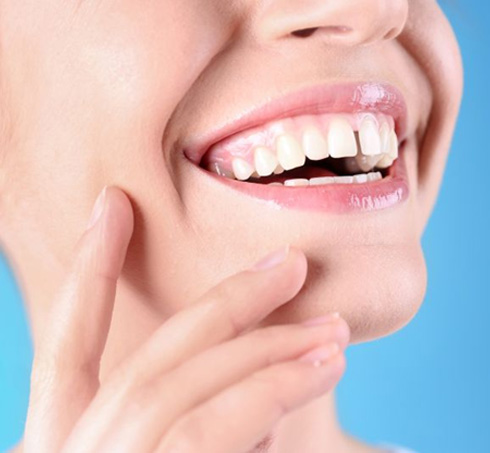
Gaps between teeth can cause your mouth to seem (and feel) weak. Plus, empty spaces can leave your gums vulnerable to harm and irritation. Invisalign may be a viable means of resolving that situation for you. It may be able to bring your teeth closer together so they look better and function optimally.
Overbite

A small overbite is both normal and natural. However, a problematic overbite occurs when the top teeth rest too far in front of the bottom teeth. This can cause jaw pain, interfere with your speech, and lead to other issues. Invisalign, often with the help of additional accessories, is able to correct many mild to moderate cases of overbite.
Underbite
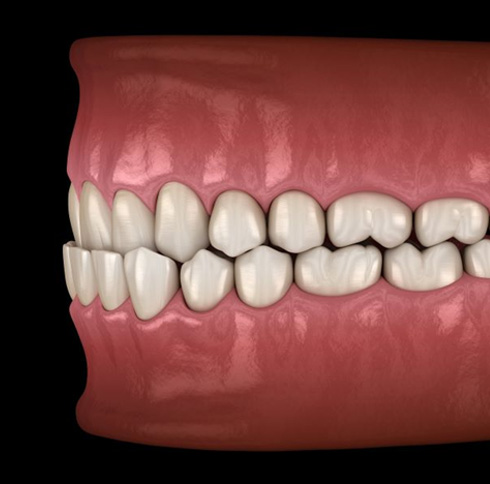
An underbite occurs when the bottom teeth sit in front of the top teeth. This can negatively affect your facial profile, have an impact on your speech, interfere with proper breathing, and more. Invisalign and appropriate accessories, such as rubber bands, are a suitable solution for some cases of underbite.
Crossbite

“Crossbite” is the name for the orthodontic problem that occurs when some of the bottom teeth rest in front of the top teeth. It can interfere with proper biting and chewing, cause speech challenges, contribute to bruxism (teeth grinding and clenching), and more. Fortunately, Invisalign is a suitable treatment for many instances of crossbite.
Open Bite
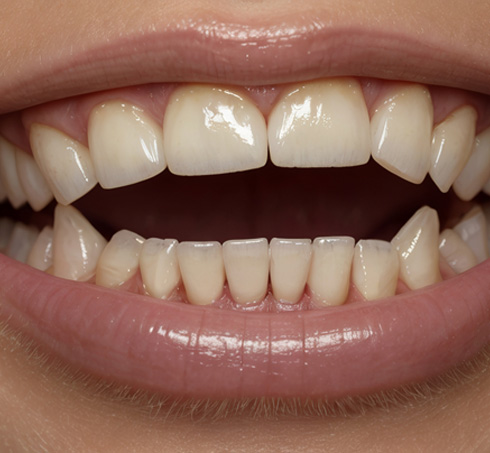
An open bite describes the situation where there is a vertical gap between the front teeth, even when the back teeth are touching one another. This can affect your facial aesthetics, your bite, and more. Invisalign may be able to shift your teeth in a way that closes an open bite.
The Benefits of Invisalign

With Invisalign from our office, you’d enjoy many great perks. These include the following:
- Shorter Treatment – Unlike braces that take two years to work, Invisalign can straighten smiles in 12-18 months or less.
- Discreet Help – Since Invisalign uses clear trays, it doesn’t draw attention to your smile. Many people won’t even notice you have aligners.
- No Disruptions – Thanks to its removability, Invisalign won’t disrupt your meals or oral care. You can eat meals and clean your smile just as you normally would.
- Fewer Follow-Ups – While metal braces require twenty to forty follow-up visits, Invisalign only involves six to twelve.
How Much Does Invisalign Cost?
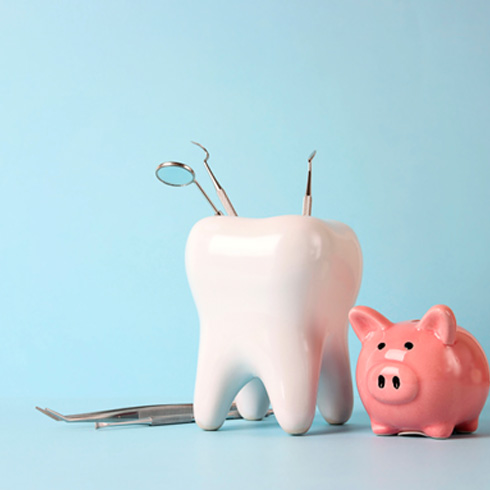
Since Invisalign is tailored to the patient, its price can vary from one person to the next. You’ll need to consult our dentists in person if you want an exact treatment estimate. Once you have, we’ll assess the factors that affect your care’s price and make Invisalign more affordable for you. Our team can also guide you through the role of dental insurance, other payment options, etc. For further details, call us – we’ll gladly tell you more over the phone!
Invisalign FAQs
Can You Eat While Wearing Invisalign Trays?
While Invisalign trays are convenient, you can’t eat while wearing them. You’ll need to remove your aligners whenever you have food or drinks besides water.
Eating with Invisalign trays inserted can greatly harm them. Indeed, doing so often leads to cracks, stains, and other damage to your aligners. Such things could easily cause your trays to break and stop working, resulting in major treatment delays. You should thus take out your aligners before you eat your meals.
After removing your trays, you should also store them in a safe and secure place. Ideal examples include a designated storage case or areas beyond the reach of pets and children.
How Do Invisalign Trays Look When Worn?
Due to their clear plastic, Invisalign trays are nearly invisible when worn. Most onlookers find them very hard to detect once they’re on your teeth.
Indeed, proper maintenance can ensure your aligners remain clean, clear, and discreet. Just remember to rinse them with cool water before and after meals, and to brush them at least once a day. These habits will keep your trays transparent by removing excess debris from them.
The only notable exceptions to these rules are Invisalign attachments, buttons, and elastics. Since these items aren’t made of clear plastic, they’re sometimes more visible than the rest of a patient’s trays.
Can You Get Invisalign After Braces?
As a matter of fact, patients can often get Invisalign after having worn braces. It’s just a matter of finding the right treatment provider for your orthodontic needs.
Some teeth can still shift back to their crooked positions once you’re done with braces. In that scenario, Invisalign would address the minor misalignments you’ve suffered. Its aligners could also help you protect and preserve the results of your initial braces treatment.
Of course, only your dentist (or orthodontist) will know whether post-braces Invisalign could help you. You’ll thus need to consult them before you commit to any major option.
What Should You Do If Your Invisalign Tray Breaks?
A broken Invisalign tray could cause major disruptions to your treatment. That said, the best response to it will depend on its level of damage.
If the tray only has a hairline crack, you can continue using it as-is. Just make sure to be careful when removing and inserting it going forward. For example, you should apply even pressure to the aligner whenever you place it on your smile. You’d also do well to minimize your tray’s bending during removal by using a flat edge.
You should see your dentist for a replacement tray if the original is completely broken. Attempting repairs yourself is a bad idea, as you may put your smile’s health at greater risk. Meanwhile, a qualified dentist could have a dental lab provide you with a copy of the damaged aligner.







